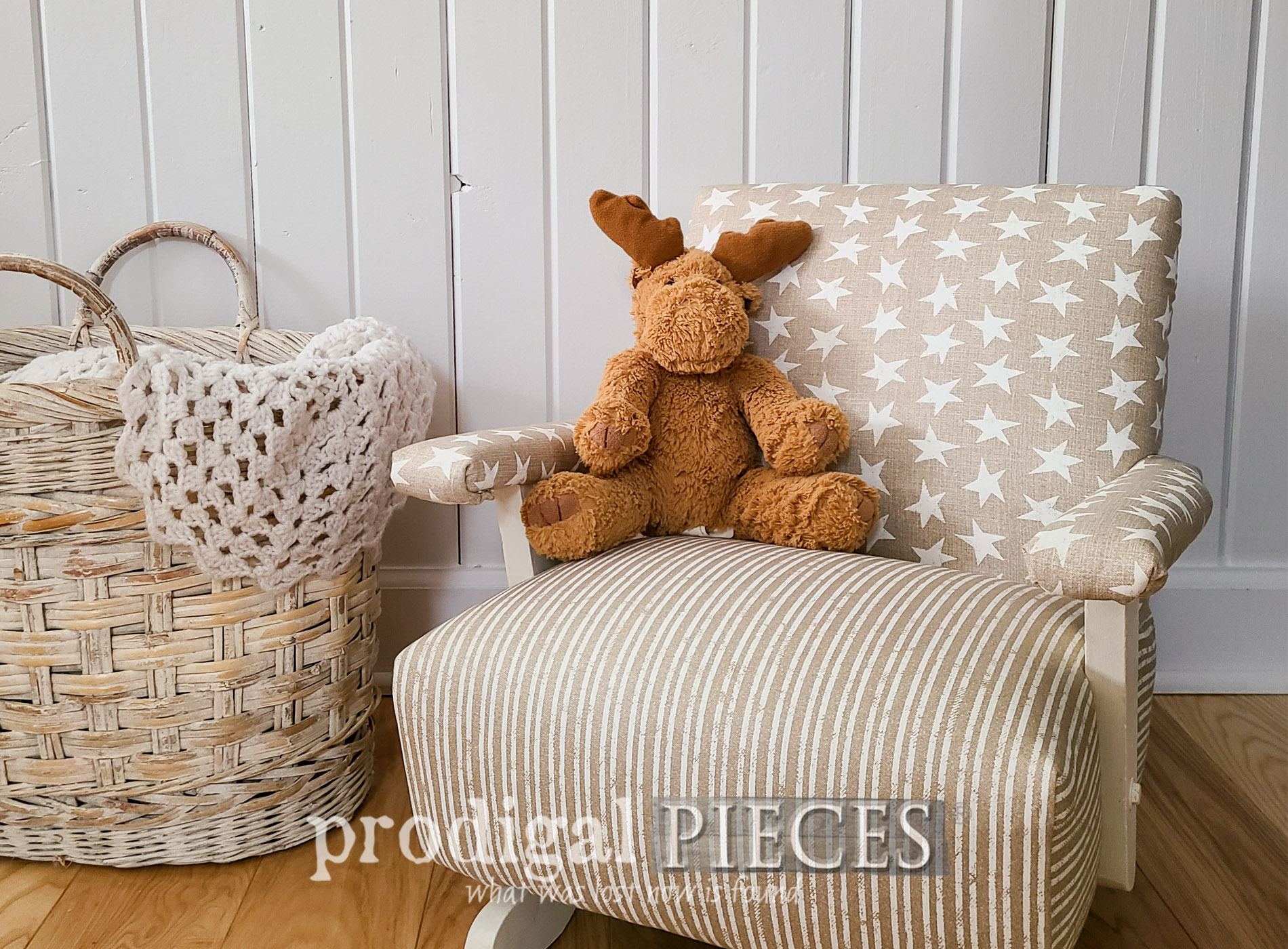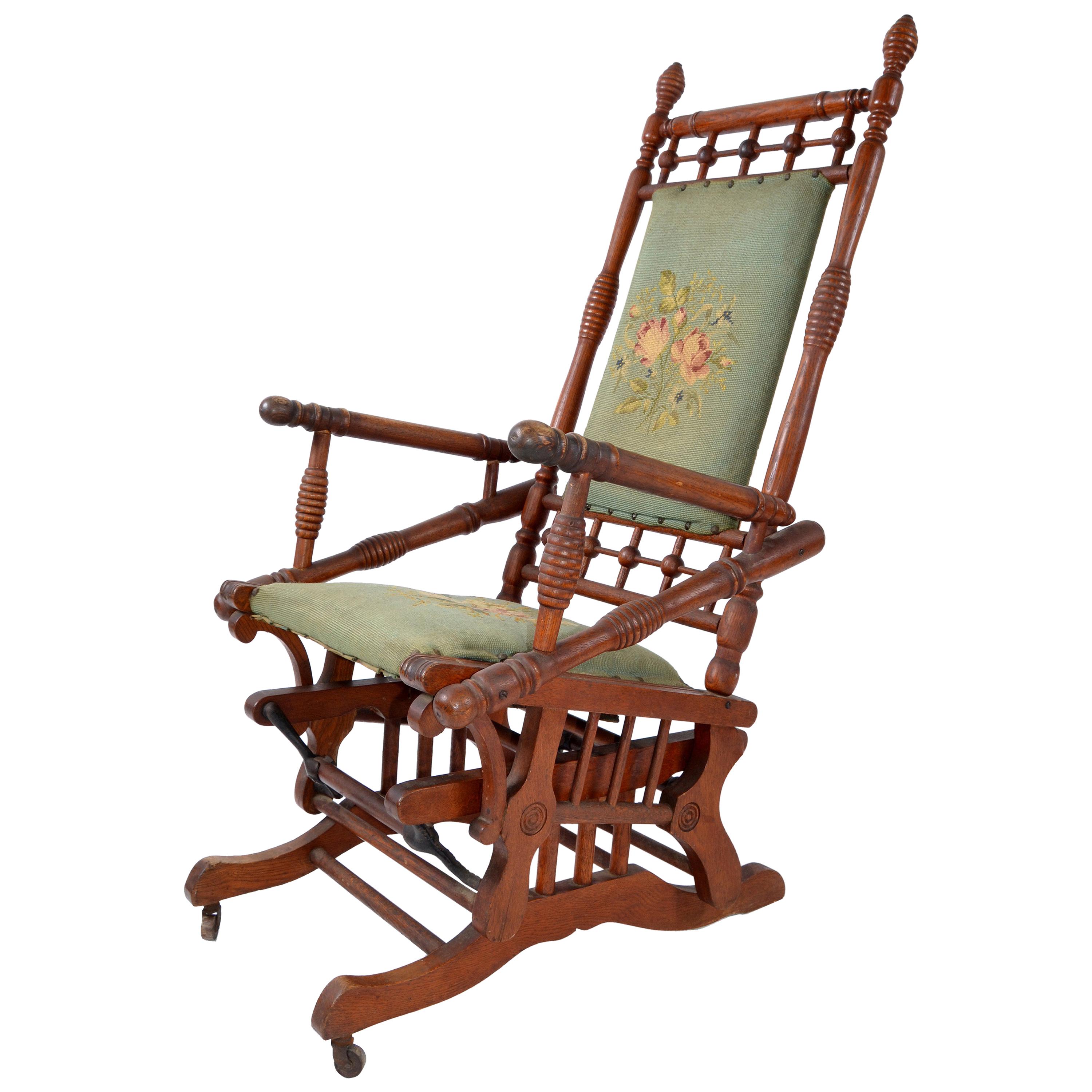Preparing for the Reupholstery Project

Before diving into the exciting world of reupholstering, it’s crucial to lay a solid foundation for success. This involves carefully assessing the current state of your rocking chair, envisioning its transformation, and gathering the necessary tools and supplies.
Identifying Existing Fabric and Materials
The first step is to understand the current upholstery. This will provide valuable insight into the chair’s construction and guide your choices for the new upholstery. Carefully examine the fabric and note its type, texture, and color. If the fabric is labeled, take note of the material composition. For example, it might be cotton, linen, velvet, or a blend of fabrics. Additionally, examine the padding material beneath the fabric. This could be foam, batting, or a combination of materials. Understanding the existing materials will help you choose suitable replacements for the new upholstery.
Determining Desired Fabric and Materials
With a clear picture of the existing upholstery, it’s time to envision the new look for your rocking chair. Consider the child’s preferences, the overall style of the room, and the desired level of durability. For a child’s rocking chair, choose a fabric that is durable, easy to clean, and stain-resistant. You might opt for a fabric like cotton, linen, or a blend that offers a balance of durability and comfort. For the padding, consider a high-density foam for added support and comfort.
Gathering Tools and Supplies
Once you’ve decided on the new fabric and materials, it’s time to gather the necessary tools and supplies. These tools will help you safely and effectively reupholster the rocking chair.
- Screwdriver: A screwdriver is essential for disassembling and reassembling the rocking chair. Choose a screwdriver with a variety of interchangeable heads to handle different screw sizes.
- Staple Gun: A staple gun is used to secure the new fabric to the chair’s frame. Select a staple gun that can handle the thickness of the fabric and padding.
- Fabric Scissors: Sharp fabric scissors are crucial for cutting the new fabric to the desired size. Ensure the scissors are sharp enough to cut through multiple layers of fabric and padding.
- Measuring Tape: A measuring tape is essential for accurately measuring the chair’s frame and cutting the fabric to the correct dimensions.
- Safety Pins: Safety pins are used to temporarily hold the fabric in place before stapling.
- Fabric Adhesive: Fabric adhesive can be used to reinforce the fabric and prevent it from shifting during the stapling process.
- Padding Material: The padding material provides comfort and support for the rocking chair. Choose a suitable padding material, such as foam or batting, based on the desired level of comfort and durability.
Disassembling the Rocking Chair
With the tools and supplies gathered, it’s time to disassemble the rocking chair. This step allows you to access the frame and existing upholstery for removal.
Removing Existing Upholstery
Begin by carefully removing the existing upholstery. Start by identifying the attachment points of the fabric. These are typically staples or tacks that secure the fabric to the chair’s frame. Use a screwdriver to carefully remove any screws or bolts that hold the upholstery in place. Once the fabric is loose, gently peel it away from the frame, taking care not to damage the fabric or the chair’s structure.
Safely Removing Staples and Tacks
When removing staples or tacks, use a pair of pliers or a staple remover to carefully pull them out. Avoid using excessive force, as this can damage the chair’s frame. Work slowly and methodically to ensure that all staples and tacks are removed without damaging the chair.
Cleaning and Preparing the Chair’s Frame
Once the existing upholstery is removed, it’s important to thoroughly clean the chair’s frame. This will remove any dirt, dust, or debris that may have accumulated over time.
Cleaning the Chair’s Frame
Use a soft brush or vacuum cleaner to remove loose dust and debris from the frame. For more stubborn dirt, you can use a damp cloth with mild soap. Avoid using harsh chemicals or abrasive cleaners, as these can damage the frame. Allow the frame to dry completely before proceeding to the next step.
Preparing the Frame for New Upholstery
After cleaning, inspect the frame for any damage or loose joints. If you find any damage, repair it before proceeding. This ensures a sturdy and stable base for the new upholstery.
Cutting and Attaching the New Fabric

With the chair stripped and prepped, it’s time to bring in the star of the show: your brand-new fabric! This is where you get to let your creativity shine.
To ensure a perfect fit, you’ll need to carefully measure and cut the fabric. Then, you’ll attach it to the chair’s frame using a staple gun, adding padding for comfort, and finally, trimming and securing any excess fabric.
Measuring and Cutting the Fabric
Before you start cutting, you need to know exactly how much fabric you need. This is where careful measurement comes in.
- Measure the chair’s seat, back, and sides: Using a tape measure, carefully measure the width, depth, and height of each section. Be sure to account for any curves or angles.
- Add seam allowance: To ensure enough fabric for stapling and to allow for any potential shrinkage, add a seam allowance of at least 2 inches to each measurement.
- Mark the fabric: Once you have your measurements, use a fabric marker or chalk to mark the fabric.
- Cut the fabric: Using a pair of sharp fabric shears, carefully cut the fabric along the marked lines.
When cutting the fabric, use a cutting mat to protect your work surface and ensure a clean, precise cut.
Attaching the Fabric to the Frame
Now it’s time to bring the chair and fabric together. This is where the staple gun comes in.
- Prepare the chair: Ensure the chair is stable and secure.
- Start with the seat: Place the fabric over the seat, making sure it’s centered and smooth.
- Staple the fabric: Using a staple gun, start stapling the fabric to the frame, working your way around the edges.
- Tension is key: Pull the fabric taut as you staple to create a smooth, wrinkle-free finish.
- Repeat for the back and sides: Once the seat is done, repeat the process for the back and sides of the chair.
It’s important to use a staple gun that is appropriate for the thickness of your fabric and the size of the chair. Always wear safety glasses to protect your eyes from flying staples.
Adding Padding Material
Adding padding to the chair’s seat and back will make it more comfortable and inviting.
- Choose your padding: There are several types of padding materials available, including foam, batting, and fiberfill.
- Cut the padding: Cut the padding to fit the chair’s seat and back.
- Attach the padding: You can attach the padding to the chair using staples or adhesive.
If you’re using foam padding, you can use a utility knife to cut it to size. For batting or fiberfill, you can use scissors.
Trimming and Securing Excess Fabric, How to reupholster a child’s rocking chair
Once the fabric is attached and the padding is in place, you’ll need to trim any excess fabric and secure it properly.
- Trim the fabric: Use sharp scissors to trim the excess fabric around the edges of the chair.
- Secure the fabric: You can secure the fabric using staples, glue, or a combination of both.
For a neat and professional finish, trim the fabric close to the staples. Use a small piece of fabric to cover any exposed staples.
Finishing Touches and Reassembly: How To Reupholster A Child’s Rocking Chair

The final steps of reupholstering a child’s rocking chair involve adding finishing touches and carefully reassembling the chair. These steps ensure a durable and safe rocking experience for your little one.
Applying Fabric Adhesive
Fabric adhesive provides extra strength and durability to the fabric seams, preventing them from unraveling or coming loose over time. Different types of fabric adhesives are available, each with its own properties and applications.
- Spray adhesives are easy to apply and dry quickly, making them ideal for large areas. However, they can be messy if not used carefully.
- Liquid adhesives offer precise application and are suitable for smaller areas. They typically have a longer drying time compared to spray adhesives.
- Fabric glue sticks are convenient and mess-free, making them ideal for quick repairs or small areas.
Applying fabric adhesive correctly is crucial to ensure its effectiveness. Here are some tips:
- Choose the right type of adhesive based on the fabric type and the area you are working on.
- Apply the adhesive sparingly to avoid creating a sticky mess.
- Allow the adhesive to dry completely before handling the fabric to prevent it from sticking to other surfaces.
Reassembling the Rocking Chair
Reassembling the rocking chair requires patience and attention to detail. It’s important to ensure that all parts are securely attached to prevent the chair from becoming unstable or dangerous.
- Start by attaching the newly upholstered seat to the chair frame, ensuring it is centered and aligned correctly.
- Attach the back rest, making sure it is securely fastened to the frame.
- Attach the arms, ensuring they are securely fastened and aligned with the seat and back rest.
- Reattach the rocking mechanism, making sure it is securely fastened to the frame.
Here are some tips for reassembling the chair safely and securely:
- Use the appropriate tools for each step, such as a screwdriver, wrench, or hammer.
- Check the stability of the chair after each step to ensure that all parts are securely attached.
- Tighten all screws and bolts to ensure that the chair is stable and secure.
Enjoy Your Newly Reupholstered Rocking Chair!
After successfully reupholstering your child’s rocking chair, you can enjoy its newfound beauty and comfort. Here is a checklist to ensure a successful reupholstery project:
- The chair is stable and secure after reassembly.
- All fabric seams are securely attached and free from unraveling.
- The fabric is smooth and free from wrinkles.
- The chair rocks smoothly and without any squeaking or rattling.
It’s essential to test the chair’s functionality after reassembly to ensure it is safe and comfortable for your child. This includes checking the rocking motion, the stability of the seat, and the strength of the fabric.
How to reupholster a child’s rocking chair – Yo, if you’re thinking about giving that old rocking chair a makeover, you’re gonna need some serious skills. Reupholstering a child’s rocking chair can be a total blast, but you gotta know what you’re doing. Check out this american rocking chair company article for some serious inspiration, then get ready to rock those sewing skills.
Once you’ve got the basics down, you can turn that chair into a masterpiece.
Yo, wanna give your kid’s rocking chair a fresh look? Reupholstering is the way to go! You can find some sick fabric at the craft store, but if you’re on a budget, maybe check out cheapest rocking chair online for a new chair altogether.
Then, you can hit up the fabric store and get your DIY on! You’ll be rockin’ that chair in no time.
